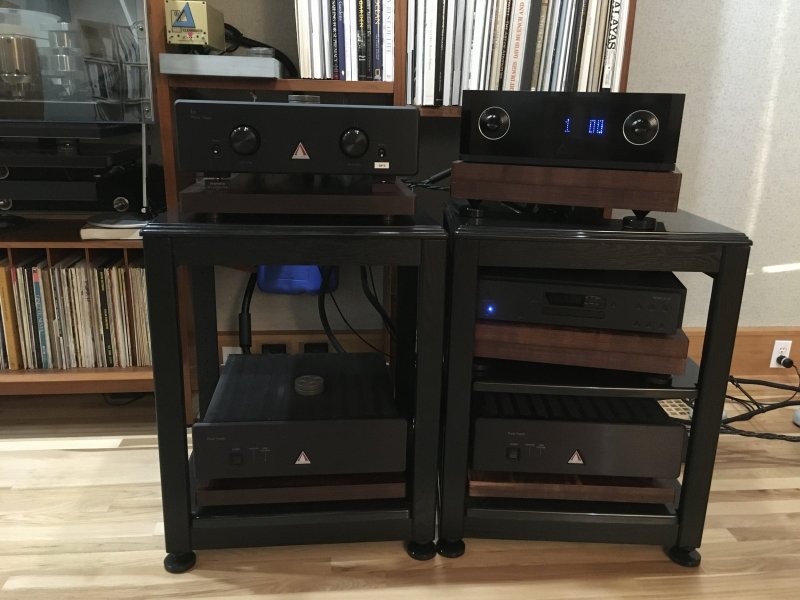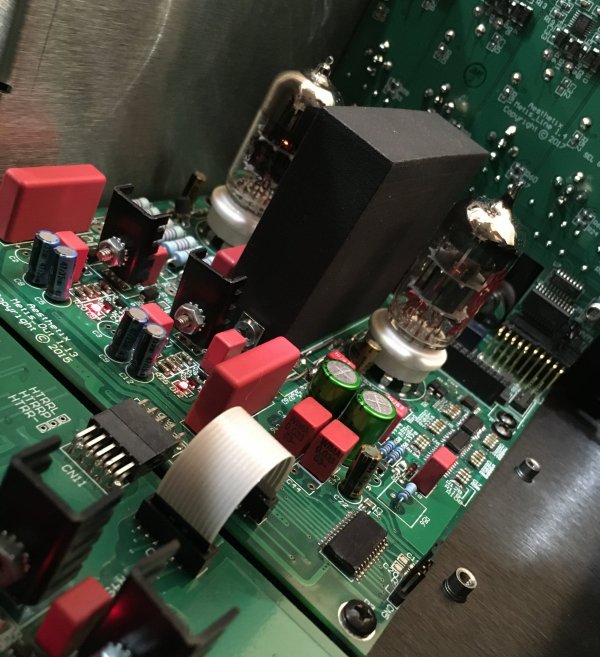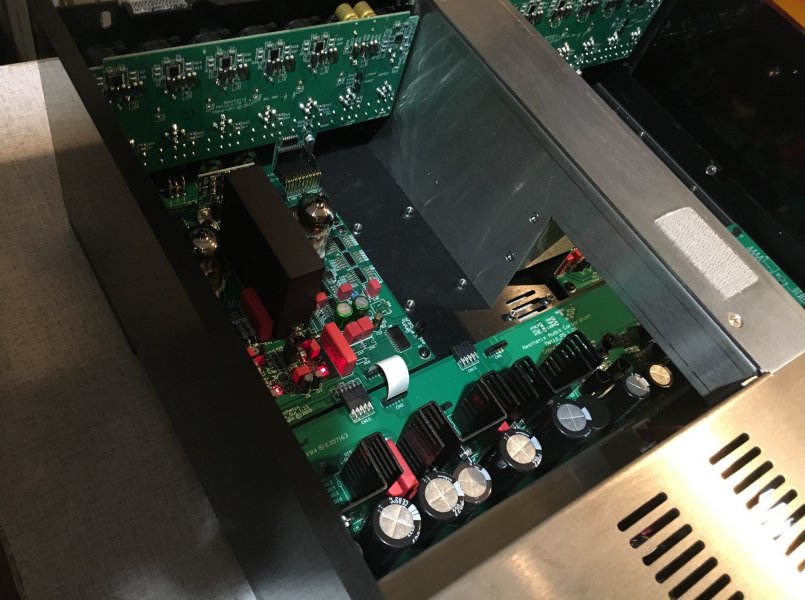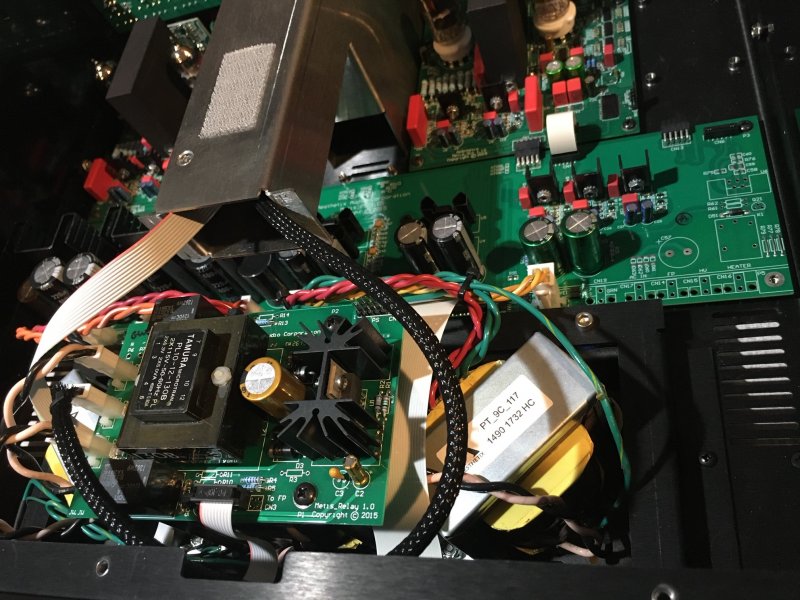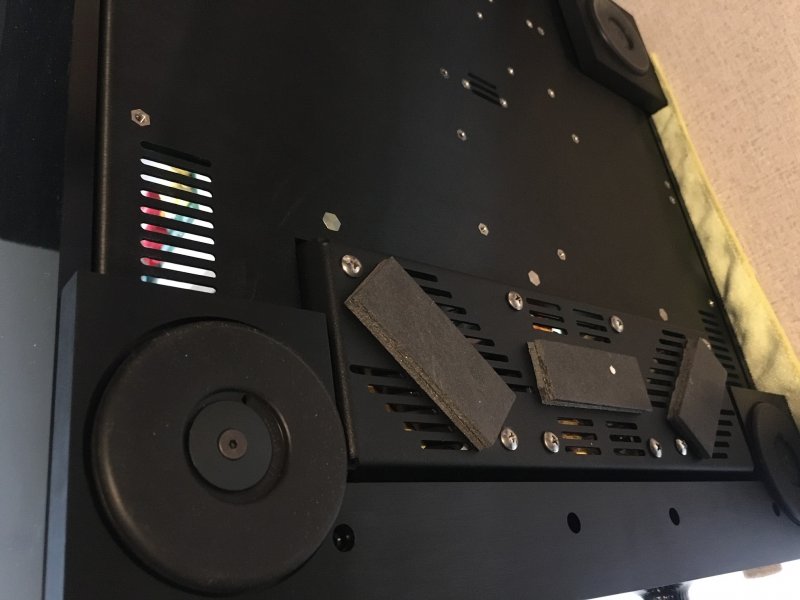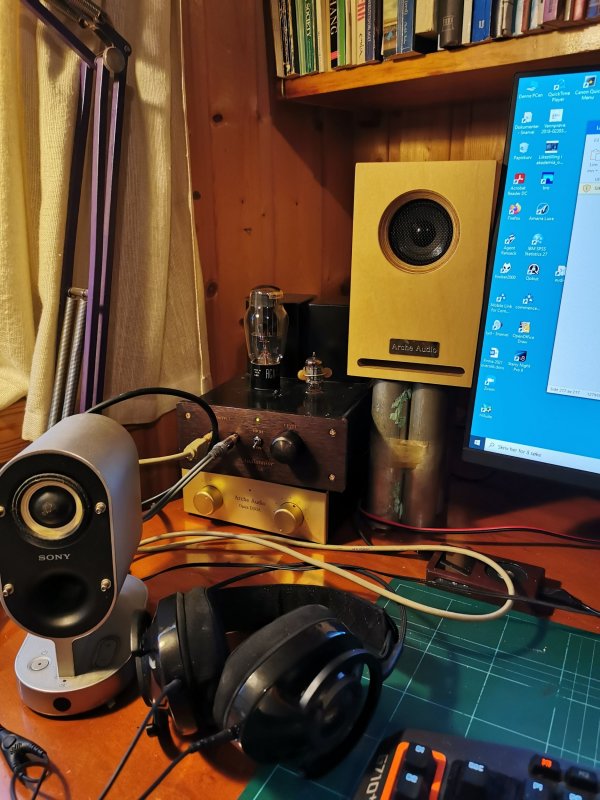Aesthetix Io Eclipse and Metis Preamp
Hi everyone,
I am taking this opportunity to share my newest system changes with WBF.
I am posting it on the Io Users Group because I have had my Io for 22 years, and I have just heard what it really sounds like through an Aesthetix preamp. It is even better than I expected!
Also, because I think that I am the only Metis owner on WBF, it would be helpful, IMHO, to leave this post on the Io site for a while to see if it generates interest. Administrator leeway requested.
This is partially a review of the Metis line stage, and mostly a description of how my system has changed from having a CJ ART (2) for twenty years. I have realized for some time that the ART was holding my music system back, but I did not have either the money or knowledge of what to replace it with. I never found a Metis review on line; the official descriptions
http://www.aesthetix.net/metis.php?aac_mobile=no do not help much in this respect. I spoke with one Metis owner who used it in a system that was oriented to streaming music.
After selling my Lotus Elise this year I took the plunge and decided on the Metis. Other preamps I considered were even more expensive, and Jim White is behind this design as much as he was behind the Io. I took another chance on Jim and Glenn.
I have about 10K vinyl classical discs and a few jazz and popular titles. This is essentially a system built around the Io Eclipse.
Concurrently with the Metis, my Elise sale has been converted to music in other important ways. I have changed all of my interconnects from SR Atmosphere to SR Galileo. WOW!
There is a new SR Purple fuse replacing the Orange fuse I had initially installed in the Metis.
The Metis is now about two months old.
Most, but certainly not all, of the improvement is resulting from the Metis.
Owner’s Manual description:
Thank you for purchasing the Metis Line Preamplifier. It has been engineered to deliver the highest attainable sound quality. This is its sole purpose. [my emphasis]
Only the highest grade electronic components are used in the Metis, including: non-inductive Roederstein metal film resistors in the signal path; polystyrene, polypropylene, and electrolytic power supply, bypass, and signal capacitors; low noise matched vacuum tubes; glass epoxy circuit boards; 16 gauge aluminum chassis; custom wound low flux power transformers. The Metis has an internal floating power supply which is isolated from the chassis when placed on a stand. The only contact with the rest of the unit is the transformer wires connected the power supply circuit board.
There are display options and
remote control (!) buttons that are way beyond my needs.
View attachment 86278
My Io is sitting on top of Takio Audio Daiza platforms. The Metis (and the Romulus) did not sound good on these platforms because both of these are designed with HRS Nimbus Couplers. (If my Io Eclipse had the new cases, it would also have the HRS feet).
I already had the Daiza platforms, so what you see here are two Daizas with the spiral cutouts facing each other. It works well with BDR Damping Dots (NLA) between them, but more experiments are pending.
View attachment 86280
From the Metis web page:
The Metis linestage utilizes highly proprietary Aesthetix Coupling Modules (ACMs) in place of traditional coupling capacitors. "I have been dreaming of this design for 20 years," says Aesthetix founder and engineer Jim White. It is well known that capacitor quality is directly correlated with sound quality, and Aesthetix has a history of investing heavily in pushing the boundaries of capacitors. But Jim wondered, "Could even better sound quality be realized if capacitors were eliminated entirely?" The answer is yes, according to Metis, which uses an ACM in each channel between the gain and output stages and no interstage or output coupling capacitors. ACMs produce constant output impedance across all audio frequencies, while a standard capacitor’s output impedance rises as frequencies drop often yielding tubby bass and other sonic degradation. In contrast, the ACMs in Metis result in a sound stage with incredible added depth, dimension and resolution.
My term for these black boxes is Monoliths, as in “2001 A Space Odyssey”
They are not as pretty as the shiny gold capacitors in the Eclipse products.
View attachment 86281
Looking down at the left channel from the front.
View attachment 86282
From the Metis web page:
The Metis chassis is designed around a suspended inner core that, when set on a flat surface, physically decouples from the main chassis. The power supply is housed in this inner core creating an "invisible" separate power supply chassis. When sitting on a rack, there is no physical connection between the power supply assembly and the main chassis, save for the connecting wires. This innovative design means Metis enjoys the sonic benefits of a separate power supply without the disadvantages of an additional chassis including extra cost, space and heat.
View attachment 86283
THE SOUND:
The number one thing that is immediately obvious is CLARITY!
Surface noise on (clean) LPs is gone. It is SO QUIET.
This is a preamp that really separates the wheat from the chaff!
The best thing that the ART had going for it is that it made most recordings sound reasonably good. The Metis does this too, but there is a giant leap forward on the best recordings that is frequently mind boggling. When a piece ends and all I can say is WOW!!, then all the effort and expense is worth it. I have had a lot of WOW MOMENTS lately.
Vocal and choral music and opera can be as real as live performance. The ART exaggerated voices and many times sounded good, but nowhere near as real, as in-the-room, as the Metis.
String quartets are a passion of mine, and the Metis delivers in spades! The Tatrai Quartet on Hungaroton, for example, is perfect in-your-room music.
Nothing is sacrificed on the Metis with 3D or 4D performances. This is a major criteria of mine and the SR Galileo interconnects deliver.
Strauss’
Salome has always been a difficult (harsh/edgy) opera to listen to on disc. Now side four of Birgit Nilsson’s performance (London OSA 1218 / Decca SET 228/9) is an edge-of-the-seat experience!
Bass is solid and dynamic.
Violins are lovely without being electronically edgy.
My 4 watt SET amps feel like they have doubled in power without any downsides. This, and the Metis clarity, make symphonic music realistic in my room, whereas it frequently was not realistic before.
I could go on, but you probably get the picture:
The Metis is wonderful!
IDIOSYNCRACIES :
For those who fondly remember 20+ years of oddities with the Io operating instructions, you will have nothing to worry about with missing out on something with the Metis.
The Metis normally sits in standby, and when the “A” on the front panel is pressed, it begins a computer check of everything as the tubes warm up. Temperatures and electrical values are checked and rechecked. The time for the Metis to come out of standby varies from about 3 minutes to 23 minutes in my experience. I asked Jim White about this and he commented:
Metis is a special product; I am not aware of any like it. It is DC coupled from input to output, with a DC correction network. It is common, and relatively easy, for a solid-state preamp to be DC coupled. However, with tubes, it is exceedingly difficult, due to the high voltages involved and the uni-polarity nature of vacuum tubes. It is also risky; if there is a failure of the DC correction network, it can send high voltages to the power amplifier. When I designed Metis, I was committed to doing it with every attention to detail and protection. This involved a "double" protection scheme; like the redundancy built into modern aircraft. The two schemes are completely unrelated...if one fails, the other is there to protect Metis and ancillary equipment. When Metis is taken out of standby, it is going through a lot of changes, most importantly in reaching thermal stability. This is why it has a variable "coming out of standby" time...it is checking and re-checking for stability. It is normal and expected for this to have a fairly wide range of timing, it is not indicative of a problem or malfunction. I can also imagine system grounding scenarios that can affect Metis' timing as it is coming out of standby, and other system components are warming up.
This is not a problem for me with using the Io, because I turn the Io on an hour or two before I want to listen. However the CD player comes on quickly and the Metis becomes the limiting factor for startup time. Jim is aware of this.
So there you have it. Once it is on, it is perfectly behaved.
PS: See link below for more new photos.
PPS: As part of this investigation, I discovered that there was about 2.5 volts of DC, in addition to the 60 + 60 volts of AC on the lines, coming from my 4 year old Equi=Tech 5WQ balanced power supply. Equi=Tech says they have seen this infrequently, but further investigating is in process. My guess is that more people have some measure of DC with the Equi=Tech but have never had a reason to check for it. Any of you with Equi=Tech wall cabinets might want to check.









